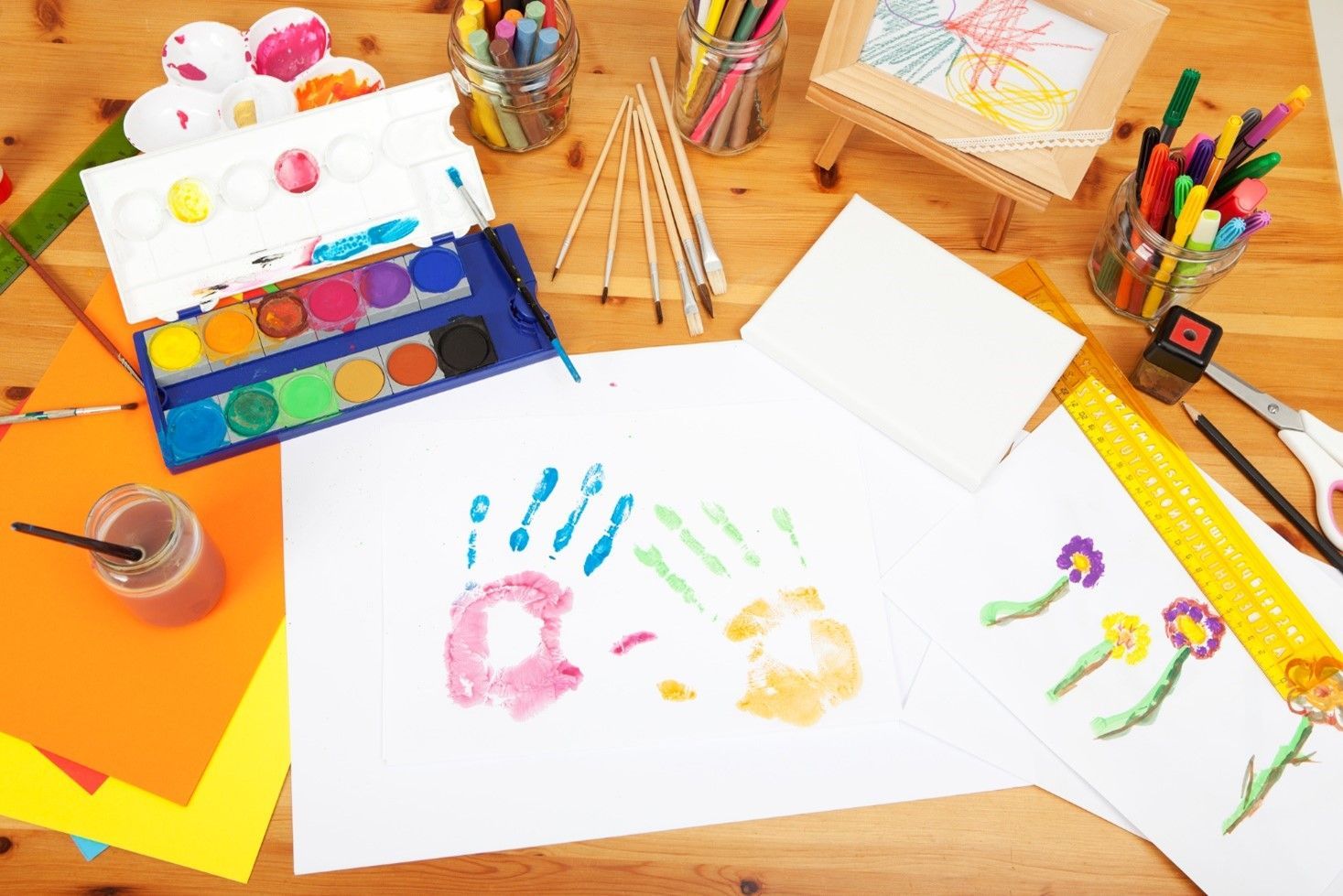Screen Time, Limits, and Your Preschooler's Day
- By Admin
- •
- 14 Feb, 2019
- •
The American Academy of Pediatrics (AAP) recommends that parents of preschoolers limit screen time to no more than one hour per day. Between your smartphone, tablet, laptop, and TV, this may seem like an impossibility. Before you give up or give in, take a look at what you need to know about screen time limits for your young child.

Talk to the Teacher
Is screen time part of your child's daily preschool routine? While most early childhood education centers don't allow regular TV viewing, they may encourage students to use technology. Don't worry-technology in the classroom isn't necessarily a bad thing.
Your child is growing up in a world that's dominated by technology. This makes it necessary for them to understand how to use computers (and other similar devices) from an early age. The key is to create a healthy balance. If your child's teacher engages your child in tech-time activities during the preschool day, you'll need to decrease at-home use.
Talk to the teacher, specifically asking how often and for how long the children use a computer or other screen. Along with asking about how much time your child uses screens at school, ask how they're using them. Learn about age-appropriate software, apps, programs, and other online options to guide at-home activities.
Your child is growing up in a world that's dominated by technology. This makes it necessary for them to understand how to use computers (and other similar devices) from an early age. The key is to create a healthy balance. If your child's teacher engages your child in tech-time activities during the preschool day, you'll need to decrease at-home use.
Talk to the teacher, specifically asking how often and for how long the children use a computer or other screen. Along with asking about how much time your child uses screens at school, ask how they're using them. Learn about age-appropriate software, apps, programs, and other online options to guide at-home activities.
Set a Timer
Your young child is just starting to learn the concept of time. This abstract idea isn't always easy for a three or four-year-old to grasp. This means your child may require a concrete reminder when it comes to timed tasks.
Simply telling your child that they have 30 minutes or one hour of screen time won't always work when setting limits. Instead of telling, show your child. Use a timer as a ticking concrete countdown that reminds your child their time is winding down.
Simply telling your child that they have 30 minutes or one hour of screen time won't always work when setting limits. Instead of telling, show your child. Use a timer as a ticking concrete countdown that reminds your child their time is winding down.
Split Total Time
One hour per day doesn't have to equal 60 consecutive minutes of screen time. Screen limits free additional time for your child to engage in healthy activities, such as playing outside. Split the total amount of screen time into smaller units to reduce the risks associated with constant sedentary behaviors.
Again, if your child uses a screen at school, count that time towards their one hour. If your child doesn't use a screen during the daycare or preschool day, split the 60 minutes of tech-time into 10- or 15- minute groupings. These shorter blocks of time meet your preschooler's attention span where it is now, making it less likely that your child will passively sit and zone out in front of the screen.
Children with longer attention spans can have 30 minute or longer blocks of time. But this doesn't mean your child should sit still and engage with the screen for a full 60 minutes without a break.
Again, if your child uses a screen at school, count that time towards their one hour. If your child doesn't use a screen during the daycare or preschool day, split the 60 minutes of tech-time into 10- or 15- minute groupings. These shorter blocks of time meet your preschooler's attention span where it is now, making it less likely that your child will passively sit and zone out in front of the screen.
Children with longer attention spans can have 30 minute or longer blocks of time. But this doesn't mean your child should sit still and engage with the screen for a full 60 minutes without a break.
Give Breaks
Require breaks as a part of setting screen time limits. Encourage your child to engage in active or handson activities during their screen breaks. This could include playing outside in the yard, going to the park, moving during an indoor dance party, getting artsy with playdough, or dressing up and engaging in an imaginative play scene.
Stay Present
Half an hour of screen time doesn't equal 30 minutes of time spend alone in front of the computer or tablet. Make the most of your child's tech-time and engage with them. Guide your child as they choose what to watch on TV or play on the computer.
During your child's screen-based activity, interact with them-asking open-ended questions (questions that don't have a yes or no answer). This helps you to monitor what your child is doing online, or in front of a screen, and makes this tech-time activity more educational.
Are you looking for a preschool program that provides plenty of educational opportunities? Contact Riviera Daycare & Preschool for more information.
During your child's screen-based activity, interact with them-asking open-ended questions (questions that don't have a yes or no answer). This helps you to monitor what your child is doing online, or in front of a screen, and makes this tech-time activity more educational.
Are you looking for a preschool program that provides plenty of educational opportunities? Contact Riviera Daycare & Preschool for more information.
Starting preschool can be a daunting experience for children Read this blog to learn how to help your child overcome separation anxiety.
Here are some key questions to ask during a parent-teacher conference and what you can expect from a conversation with your child's teacher.
A solid foundation in emotional development can set the stage for a lifetime of healthy relationships and successful interactions. Read on to learn how.
Know the benefits of outdoor play for young children? Take a look at what parents need to know about outdoor play, play spaces, learning, and development.
As your child enters preschool, they begin to embrace independence. However, you may start to notice certain behavioral problems. Read on for more info.
Enrolling your child in daycare is one way to give them the best start in life. Read on to discover some of the benefits of sending your child to daycare.
Preschool can be an exciting but overwhelming experience for parents and children. If your child is about to join preschool, have the following items.
Three may seem fairly young to start sending your child to preschool, but the benefits of two full years of education are manifold. Here are four.







